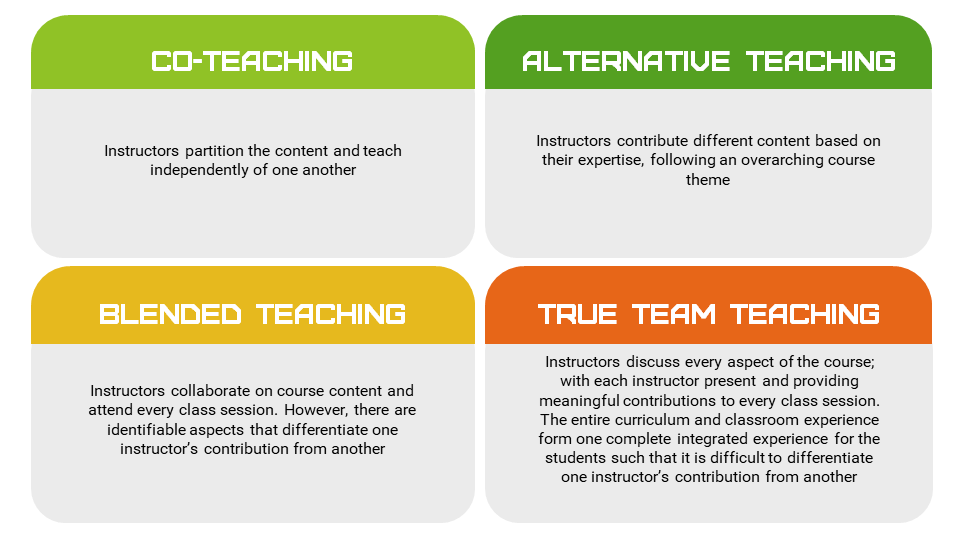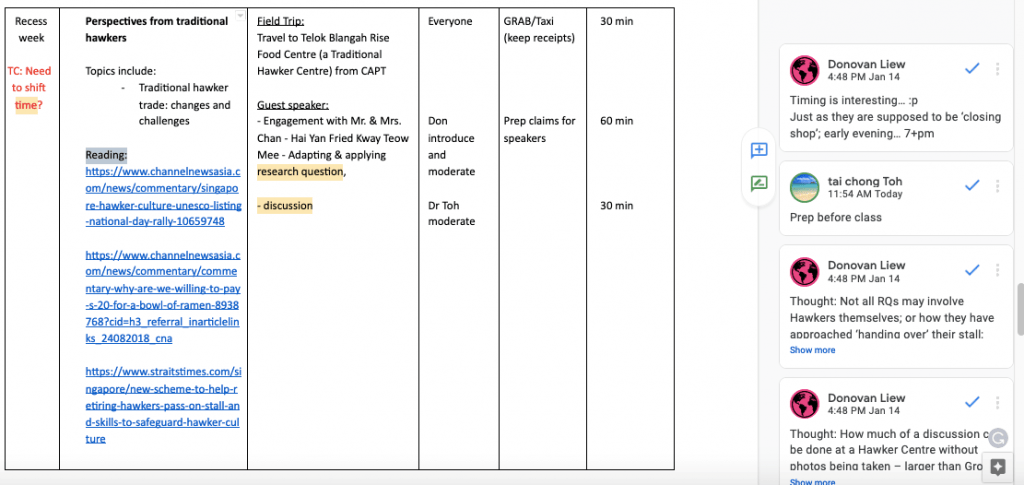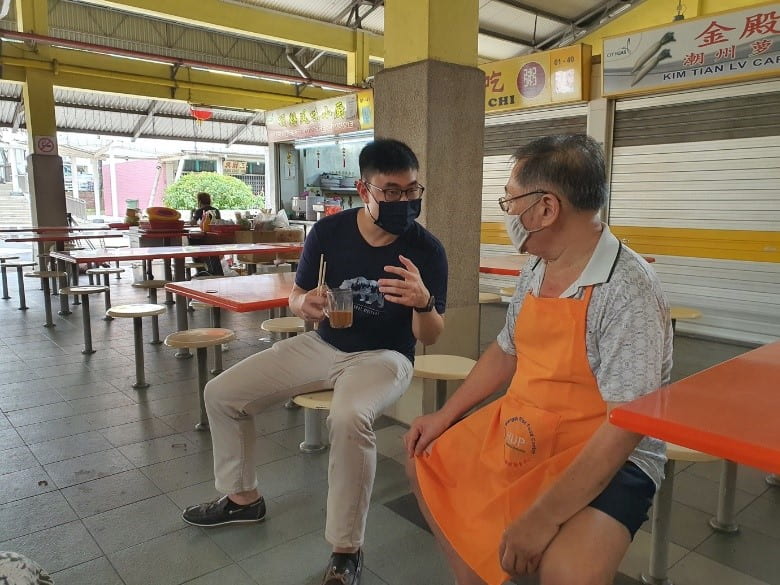TOH Tai Chong, College of Alice & Peter Tan (CAPT), and
NG Jia Yun Florence, Ridge View Residential College (RVRC)
Tai Chong and Florence describe three key lessons gleaned from teaching
interdisciplinary classes in the residential colleges.

Recommended Citation Toh T. C., & Ng, F. J. Y. (2021, July 26). Lessons learnt from our interdisciplinary team teaching experience. Teaching Connections. https://blog.nus.edu.sg/teachingconnections/2021/07/26/lessons-learnt-from-our-interdisciplinary-team-teaching-experience/
The transition to interdisciplinary education
Confronted with a rapidly evolving world, scholars in higher education have been advocating for an integrative approach to learning (Huber et al., 2005), so that experiences and knowledge can be connected beyond the barriers of disciplines and curriculum. One means to achieve integrative learning is through an interdisciplinary education (Van den Besselaar & Helmeriks, 2001), so that students will continue to develop expertise in their specialty and become more skilful at making connections across disciplines (Huber et al., 2007).
The case for interdisciplinary team teaching
How do we achieve interdisciplinary education in the classroom? Within NUS, educators in the Residential College (RC) system are intentionally placed in a supportive environment, where colleagues from different disciplines are encouraged to collaborate in both in- and out-of-classroom teaching. Naturally, many of us have leveraged on team-teaching as a platform to co-develop the module design and lesson delivery (Brassard & Namrata, 2017; Toh & Ortiga 2018).
The four types of team-teaching described by Cruz & Geist (2019) are as follows:

Drawing upon our experience teaching in the RCs, we would like to offer three key lessons that we have learnt through interdisciplinary team teaching.
Lesson 1: Be adaptive and inclusive in curriculum design
- Keep an open mind in understanding the diverse and specialised knowledge of each instructor within the team
- Create intentional “checkpoints” for the teaching team to discuss emerging issues and underlying concerns. Such discussions should include critically engaging with the reading materials from each team member so that we learn from each other and co-create the teaching materials using pedagogical tools from different disciplines, such as reflective writing, a tool commonly used in the Humanities.
- Organise short debrief sessions after class to prompt reflection-on-action to improve teaching (Figure 1). A post-module discussion is often overlooked, but such discussions are crucial, especially for recurring modules, as it prompts us to reflect on our teaching experience and identify areas of improvement.


Lesson 2: Be intentional in describing how assessments are graded
- Use criterion-based rubrics to provide clarity about the levels of competency expected
- Explain how the grading is standardised within the teaching team
- Focus on providing timely feedback to clarify concepts and improve performance.
Lesson 3: Tap on Students-as-Partners¹ as a tool to enhance teaching and learning
- Encourage students to share their perspectives using authentic case studies to promote peer learning.
- Co-create assessment rubric with students
- Recruit into the teaching team as co-conveners or teaching assistants. Recently, a Geography student was roped in to co-lead a non-credited reading group in CAPT to integrate cultural geography into an environmental science course led by a teaching staff (Figure 3), while students from the Social Sciences were invited as guest speakers to discuss the social dimensions of the topic.

Authors
 TOH Tai Chong is a Senior Lecturer at the College of Alice & Peter Tan (CAPT), where he is also the Associate Director of Studies and Academic Director. He believes that learning should be integrated across disciplines and learning activities. Hence, his interests in education include Students-as-Partners (SaP), experiential learning, reflective writing and interdisciplinary education. Tai Chong’s past written contributions to the blog include posts on the benefits of developing and maintaining student partnerships in teaching and learning, and educational tools which support one’s teaching practice.
TOH Tai Chong is a Senior Lecturer at the College of Alice & Peter Tan (CAPT), where he is also the Associate Director of Studies and Academic Director. He believes that learning should be integrated across disciplines and learning activities. Hence, his interests in education include Students-as-Partners (SaP), experiential learning, reflective writing and interdisciplinary education. Tai Chong’s past written contributions to the blog include posts on the benefits of developing and maintaining student partnerships in teaching and learning, and educational tools which support one’s teaching practice.
Tai Chong can be reached at taichong.toh@nus.edu.sg.

Florence NG is a Lecturer at Ridge View Residential College (RVRC) where she teaches modules on social media, branding and sustainability. Her interests in education include Students-as-Partners (SaP), peer assessment, team teaching and interdisciplinary education. She is also a certified LEGO® Serious Play facilitator, and has contributed a post on incorporating LEGO® in her forum class activities to raise student engagement.
Florence can be reached at florence.ng@nus.edu.sg.
Endnote
- Bovill et al. (2014) use the term “Students-as-Partners” to describe a process of co-creation between the instructors and students, across varying degrees of the curriculum design and the learning process, in teaching and learning activities to promote shared ownership and responsibility (Bovill & Woolmer, 2019).
Acknowledgements
We would like to thank the Learning Community (LC) – Student Growth and Development in the New Learning Spaces of Residential Colleges – for creating a purposeful platform to exchange ideas and supporting us during this period of significant change. Our deepest appreciation goes to the members of the LC who have provided feedback to improve this piece and to NUS Teaching Enhancement Grant for making this LC possible.
References
Bovill, C., & Woolmer, C. (2019). How conceptualisations of curriculum in higher education influence student-staff co-creation in and of the curriculum. Higher Education, 78(3), 407-422. https://doi.org/10.1007/s10734-018-0349-8
Brassard, C., & Namrata C. (2017). Cautiously implementing team teaching: A ref lection on a pilot team teaching course. CDTL Brief, 20(1), 1-7.
Cook-Sather, A., Bovill, C., & Felten, P. (2014). Engaging students as partners in learning and teaching: A guide for faculty. John Wiley & Sons.
Cruz, L., & Geist, M. J. (2019). A team teaching matrix: Asking new questions about how we teach together. Transformative Dialogues: Teaching & Learning Journal, 12(1), 1-15. https://kpu.ca/sites/default/files/Transformative%20Dialogues/TD.12.1_Cruz&Geist_Team_Teaching_Matrix.pdf
Day, L., & Hurrell, D. (2012). A teaching team: More than the sum of its parts. In Creating an inclusive learning environment: Engagement, equity, and retention. Proceedings of the 21st Annual Teaching Learning Forum, 2-3 February 2012. Perth: Murdoch University. http://otl.curtin.edu.au/tlf/tlf2012/refereed/day.pdf
Huber, M. T., Hutchings, P., & Gale, R. (2005). Integrative learning for liberal education. Peer Review, 7(3/4). https://www.aacu.org/publications-research/periodicals/integrative-learning-liberal-education
Huber, M. T., Hutchings, P., Gale, R., Miller, R., & Breen, M. (2007). Leading initiatives for integrative learning. Liberal Education, 93(2), 46-51. https://www.aacu.org/publications-research/periodicals/leading-initiatives-integrative-learning
Plank, K. M. (2011). Team teaching: Across the disciplines, across the academy. New Pedagogies and Practices for Teaching in Higher Education. Stylus Publishing, LLC. PO Box 605, Herndon, VA 20172-0605.
Toh T. C., & Ortiga, Y. Y. (2018). A reflection on interdisciplinary team-teaching in a residential college. Asian Journal for the Scholarship of Teaching and Learning, 8(2), 223-234. https://nus.edu.sg/cdtl/engagement/publications/ajsotl-home/archive-of-past-issues/v8n2/a-reflection-on-interdisciplinary-team-teaching-in-a-residential-college
Van den Besselaar, P., & Heimeriks, G. (2001, July). Disciplinary, multidisciplinary, interdisciplinary: Concepts and indicators. In Conference on Scientometrics and Informetrics (ISSI2001) (pp. 705-716). 16-20 July 2001. Sydney: Australia. https://www.academia.edu/2722325/Disciplinary_multidisciplinary_interdisciplinary_Concepts_and_indicators

